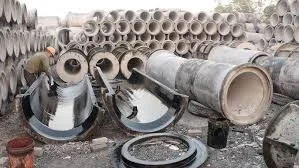Aug . 13, 2024 15:34 Back to list
Innovative Techniques for Custom Metal Sand Casting to Enhance Industrial Manufacturing Processes
Custom Metal Sand Casting An Overview
Custom metal sand casting is a traditional manufacturing process that has been utilized for centuries to produce intricate metal components. This method is particularly favored for its versatility and cost-effectiveness, making it ideal for both small-scale production and large industrial applications. This article explores the fundamentals of sand casting, its advantages, applications, and the steps involved in the custom casting process.
What is Sand Casting?
Sand casting is a metal casting process characterized by the use of sand as the mold material. In this process, a pattern made of metal, plastic, or wood is created to form the shape of the desired object. Sand mixed with a binding agent is then packed around the pattern to create a mold. Once the mold is formed, the pattern is removed, and molten metal is poured into the cavity. After the metal cools and solidifies, the sand mold is broken away to reveal the final casting.
Advantages of Custom Metal Sand Casting
One of the primary advantages of custom metal sand casting is its ability to produce complex shapes that would be challenging to achieve through other manufacturing methods. This process allows for significant design flexibility, making it possible to create parts with intricate geometries and fine details.
Another benefit is the cost-effectiveness of producing custom pieces, especially in low to medium production runs. Sand casting requires relatively low initial investment compared to other casting processes, such as die casting or investment casting, which may necessitate expensive molds or tooling. Moreover, the materials used in sand casting, including aluminum, bronze, iron, and steel, are widely available and economically feasible.
Custom metal sand casting also lends itself well to rapid prototyping. By enabling designers and engineers to quickly test their designs, this process can lead to faster product development cycles. Additionally, manufacturers can produce small batches of tailored components to meet unique customer requirements without incurring significant costs.
Applications of Sand Casting
The applications of custom metal sand casting are vast and span numerous industries. It is commonly used in the automotive sector to produce components such as engine blocks, crankshafts, and transmission housings. The aerospace industry also relies on sand casting for producing critical parts such as brackets and housings that must withstand extreme conditions.
custom metal sand casting

Moreover, custom metal sand casting finds use in the construction and machinery sectors, providing components like pump housings, valve bodies, and structural parts. This versatility, coupled with the ability to create large or small components, positions sand casting as a preferred method for many manufacturing processes.
The Sand Casting Process
The sand casting process consists of several key steps
1. Pattern Making A pattern is created based on the exact specifications of the part to be cast. This pattern is often made from durable materials to withstand the sand casting process.
2. Mold Creation The pattern is placed in a flask, and sand mixed with a binder is packed around it to form the mold cavity. The pattern is then removed, leaving behind a hollow impression.
3. Melting and Pouring The chosen metal is melted in a furnace and poured into the mold cavity. The metal flows around the mold, taking its shape as it cools and solidifies.
4. Cooling and Removal Once the metal has cooled, the sand mold is broken away, revealing the cast component. The casting is then cleaned, and any excess material, such as gates or sprues, is removed.
5. Finishing Touches The final product may undergo additional processes like surface finishing, machining, or heat treatment to enhance its properties.
In conclusion, custom metal sand casting is a critical manufacturing process that offers numerous benefits, including design flexibility, cost efficiency, and the ability to produce complex components. Its wide-ranging applications across various industries underscore its importance in modern manufacturing. As technology advances, the future of sand casting will likely evolve, continuing to meet the growing demands of different sectors while remaining a reliable choice for custom metal component production.
-
Centrifugally Cast Iron Water Main Pipe for Reliable Mains
NewsAug.22,2025
-
Durable Centrifugally Cast Iron Water Main Pipe
NewsAug.11,2025
-
Centrifugally Cast Iron Water Main Pipes for Reliability
NewsAug.10,2025
-
High-Quality Centrifugally Cast Iron Water Main Pipes
NewsAug.09,2025
-
Durable Cast Iron Water Main Pipe & Drainage Solutions
NewsAug.08,2025
-
Buy Cast Iron Pipe: Premium Ductile Iron & Drain Solutions
NewsAug.07,2025


